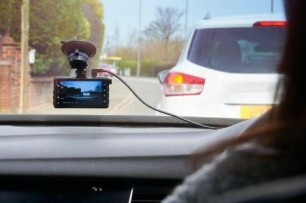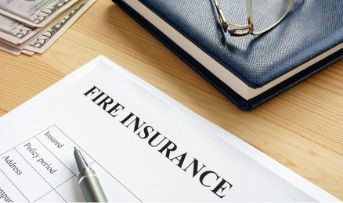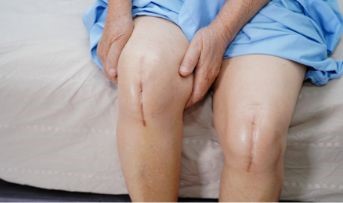General Insurance Blogs, Articles & Updates by - Magma HDI
Have us call you
- RENEW YOUR POLICY
- BUY NEW POLICY

Here are a few flu-like health conditions you must be aware of
You're familiar with that feeling when you're on the verge of becoming ill. You feel worn out, like something is wrong, and you're colder than usual. And at that point, you start to wonder just what is happening. Is it the cold, the flu, or the RSV? Or might it just be allergies?
When you first start to get sick, it can be hard to tell the difference between these illnesses. Surprisingly, they have identical symptoms. Find out in the following article what might be causing your flu-like symptoms and when you should visit a doctor.
What are the symptoms of flu?
● Nausea, vomiting, and diarrhoea
● Muscle aches and pains
● Sore throat, running nose, or cough
● Swollen lymph nodes in the neck
● Fever
What other conditions are like the flu?
1. Cold:
Most people have experienced many episodes of the common cold. A wide variety of viruses brings it on. Symptoms of a cold include a running or stuffy nose, a sore throat, coughing, sneezing, headaches or body aches, and fever. Since there is no way to tell if you have a cold, most treatments are meant to ease the symptoms.
2. COVID:
The symptoms of COVID and the flu sometimes coincide. In its early stage, COVID symptoms are more like those of a cold than of the flu. Breathing difficulties and loss of taste or smell are two symptoms that are more prevalent with COVID.
3. Pneumonia:
Both viruses and bacteria can cause pneumonia. Cough, fever, shortness of breath, and exhaustion are the primary signs of pneumonia. It's also crucial to remember that pneumonia can develop from the flu, COVID, or a simple cold. This is only sometimes the case, though. Finding out if you have pneumonia requires a chest X-ray.
4. Bronchitis:
A lower respiratory infection or inflammation is referred to as "bronchitis." It is caused by a virus that affects the lungs, but the symptoms can last even after the infection is gone. It may be caused by persistent inflammation. Your symptoms and other medical issues typically determine your course of treatment. Steroids and inhalers are helpful for some people.
5. RSV, or respiratory syncytial virus (RSV):
RSV is a widespread virus that manifests as flu-like symptoms. In grownups, it frequently resembles and feels like the common cold. But it can hurt the lungs and cause breathing problems in young children, especially those under 6 months old. Infants with RSV have fast breathing and apparent behavioural abnormalities. They could have difficulties in eating or seem more worn out than usual. A hospital stay may be necessary for oxygen and constant monitoring during treatment.
When should you go to the doctor if you're experiencing flu-like symptoms?
● People with severe lung or heart diseases
● Very young children
● Older adults over 65
● Women who are pregnant or within two weeks of birth
● People with neurologic abnormalities, such as a history of seizures
If you experience any of the following, get medical care right away:
● Dizziness
● Pressure in the chest or stomach
● Extreme muscle tenderness
● Dehydration and inability to retain food
● Difficulty breathing or fast breathing
● No improvement in symptoms after 3 to 5 days
A healthcare professional can test you for many diseases you might have and ensure you get the right treatments. Mainly due to change in seasons, flu-like symptoms are frequent. It could be hard to tell the difference between the flu and other diseases like COVID, the common cold, or strep throat. If you have the flu but aren't sure, see your doctor for a check-up.
You can speak with your physician about receiving a flu shot if you fall into one of the high-risk categories. Your medical bills, pharmaceutical charges, hospitalisation costs, and other expenses are all covered by health insurance. Health insurance in India is now more than just a choice—it's necessary to get the best medical care without worrying about how it will affect your finances.
Click HERE to buy the best health insurance in India.
Disclaimer: The information provided above is for illustrative purposes only. To get more details, please refer to policy wordings and prospectus before purchasing a policy.

Here are a few exciting ways you can organise your home for this new year
It's the new year, and one resolution that we all commonly try to make is to keep our homes organised and well-maintained. A well-organised home is the key to an organised and healthy you. Good home organising ideas with the proper implementation strategy can give you the perfect home without spending a bomb on it.
Do you also have a new year resolution of organising your home well? Here are a few interesting ways you can achieve it this new year.
1. Take one room at a time:
Organising your entire home can be an uphill and time-consuming task. You will get confused about how and where to start and what changes to incorporate. Start with organising your home by taking small steps. Start from one room at a time. You can focus better and devote time to individual rooms separately. This will make the entire home organising task less daunting and easily manageable.
2. Hanging spaces:
Create multiple hanging spaces in all your rooms, galleries, and sitting areas. You should have appropriate space to hang your jackets, blazers and other clothes so that you do not have to put them here and there on the bed, side table or the floor! This will make your rooms clutter-free and look neat and clean. You can put a peg board and hang your hats, caps, shirts, t-shirts, etc., on it. This will look nice and organised, and you will be easily able to locate all your stuff too.
Hanging spaces in the kitchen can be very useful as well. Paste iron hooks behind the main kitchen door and cabinet doors. You can hang the dusting cloth, small pans, spare packets, etc., on them and not store or litter them in the open. They will stay behind the doors and not be visible to all.
3. Learn to donate:
Each of us has the habit of stocking up multiple useless things we don't need and creating clutter in our wardrobes and even out in the open. For example, you might have stacked up dresses from the past that do not fit you anymore. Since you have limited storage space, you keep putting the new clothes you buy on those same shelves. The clothes start tumbling out of your closet every time you open them.
Learn to let go and donate! Your old clothes will not get bigger on their own, nor will they shrink. Donate the extra clothes to the needy in an orphanage or an old-age home. It will feel great to help, and your wardrobe will be lighter and more organised.
4. Go green:
You may buy indoor plants in fancy, beautiful pots and use them as decorative pieces around your house. They will provide fresh air while making your house green and beautiful. You can also hang a few pots in the stairway and outside the main entrance to give a great look.
5. Proper marking:
A key to being organised is keeping everything labelled and properly marked. You can start with the kitchen and put labels on each storage container. This will make it easy to figure out what is inside each container, and the items will not get mixed up.
You can also label items such as photo albums to instantly know when these photographs were taken, even after several years. Use labels for marking important files and documents, first aid kits, etc., so you can easily find them when needed.
Start with one thing at a time, and you will enjoy organising your house this new year. Even if you do little at first, do it with full dedication and focus. This will ensure that your efforts do not go waste and that your home looks the best.
Another important way to get organised this new year is by opting for home insurance India policy. It protects your house and all your valuable possessions from damages caused by fire, theft, earthquake, etc. Choose the best home insurance India and protect your valuable asset from mishaps.
Click HERE to buy reliable home insurance India.
Disclaimer: The information provided above is for illustrative purposes only. To get more details, please refer to policy wordings and prospectus before purchasing a policy.

These activities can promote your child's early development
Children give purpose to a family. As they carry their family's legacy, their development is always of utmost priority around the house. Parents focus on saving up for their children's education, health, marriage and fulfilling their other needs and demands. They try their best to give their children more than what was provided to them.
It is said that a child reflects the culture that is practised in the family. They imitate what they see at home. Their cognitive abilities start developing in the early stages of life. So, it is essential to engage them in various activities which stimulate their body and mind. These practices will help them utilise their time fruitfully and give them a wide range of things to explore.
Wondering how to keep your child engaged? In this blog, we will discuss a couple of activities to promote your child's early development.
1. Get your kids into musical:
Music creatively stimulates your child's brain. It helps them understand and capture different tones, rhythms and sounds. You can help them learn nursery rhymes, numbers, alphabets, etc., through music. This can shape their cognitive abilities.
The tunes will help them remember things easily. Having a fun, musical experience makes things exciting and lighthearted.
2. Lots of pictures:
You can put up many pictures in your child's room. Having visuals around will stimulate their brain. Associate the images with words, for example, a family tree. Discuss the pictures and the terms frequently. This will help them identify and relate the words to images and vice-versa. It's a fun learning technique that many experts prescribe.
3. Colours and textures:
Humans respond to colours and textures. Toddlers' brains are more receptive to sensory stimulation, including touch, vision and taste. These sensations help them understand their surroundings. You can use bold letters and dark markers to help them understand patterns, notes, etc.
Parents can use textured materials for decor and furnish their child's room with their favourite learning and playtime materials. For example- you can use cotton balls, sandpapers, beans, etc.
4. Play:
"All work and no play make Jack a dull boy" is a saying we've all heard. Physical movement holds as much importance as mental development does. Engage your children in outdoor activities to help them get familiar with the environment and observe the things around them. This further allows them to recognise certain situations and people when interacting outdoors.
5. Organization:
Arrangement and organisation help your kids understand the importance of cleanliness. At the same time, it trains their mind and builds organisational skills, which will prove to be helpful for them in the future. You can start by helping them understand how to place their toys, small clothing items, activities' kits, etc.
Spend time with your children and make labels for different drawers and bins. And then develop their habit to place their stuff in the assigned places. This is how you can smartly introduce discipline in your child's behaviour.
Other activities to promote your child's early development include planning a scavenger hunt, measuring their growth, numbering the days of the week and months, etc. These activities create an enjoyable learning experience and make your kids excited about future learning. Activities and hobbies help foster and strengthen the bond between parents and their children and make the interaction hesitation-free, exciting and full of love and care.
As parents, you will always be worried about your children's health. You take many measures to ensure they stay safe. And to make sure that they remain unharmed during unprecedented circumstances, it would be beneficial to purchase personal accident insurance online.
This will allow your children to focus only on learning, imbibe new experiences, and be playful without any worries of being hurt. Don't let any hurdle hinder the path to your child's development.
Click HERE to know more about how you can buy personal accident insurance online
Disclaimer: The information provided above is for illustrative purposes only. To get more details, please refer to policy wordings and prospectus before purchasing a policy.

Six effective home remedies for sensitive teeth problem
Sensitivity is a common existing dental issue faced by most people. Research states that one out of every eight adults experiences severe discomfort due to sensitive teeth. A person can experience severe pain during eating, drinking, brushing etc. Sensitivity can be caused by worn-out tooth enamel, cavity, chipped tooth, gum disease etc. The pain can be mild to sometimes highly severe depending on the level of advancement of the sensitivity.
This article will discuss a few home remedies to help tackle sensitive teeth problems.
1. Desensitizing toothpaste:
These kinds of toothpaste contain multiple compounds that help protect nerve endings. Sensitivity is primarily a result of open nerve endings that come directly in contact with irritants causing pain and irritation. Prominent among these compounds is potassium nitrate. It decreases the flow of fluid from tubules by clogging them. This blocks the brain from receiving pain signals from open nerve endings and protects them from extreme cold or hot sensations.
2. Salt rinse:
Salt helps reduce inflammation. To reduce the sensitivity, gargle using salt and water twice every day. Take about ½ tsp of salt in a glass of lukewarm water and mix well. Swish the solution for half a minute and spit out it. Regular use of saltwater gargle can do wonders for you.
3. Hydrogen peroxide:
Hydrogen peroxide is an antiseptic and disinfectant. Doctors usually use it to sterilise wounds and cuts to prevent infection. Using this as a mouthwash in diluted form can heal gums and avoid inflammation.
Add equal portions of water and hydrogen peroxide. Swish the solution like you would with an ordinary mouthwash. Spit it out and rinse your mouth with clean water.
4. Turmeric:
Our ancestors used turmeric for years as a natural antibacterial and antiseptic formula. The curcumin in turmeric aids in healing any kind of wound. You can mix turmeric, honey and salt and apply it to your gum and give them a proper massage. Use this twice every day for better results.
5. Green tea:
Apart from weight loss, green tea has been associated with other health benefits as well. It is rich in antioxidants and also has many anti-inflammatory properties. Using green tea without sugar as a mouthwash can strengthen your teeth and reduce inflammation. Even drinking green tea regularly can do the job for you.
These are a few things that you can do to reduce sensitivity. However, make sure to take care of your teeth before the onset of any such ailments. Avoiding sugar, brushing your teeth twice a day and regular flossing are things you can follow to ensure better oral health.
Dental problems are often latent and only show up in the form of pain, bad breath or swelling. By the time one experiences these symptoms, their oral hygiene has already been severely affected. Hence, you should not skip regular dental check-ups.
Dental treatments are mainly done over a few months and can take anywhere between 4 to 15 sittings with your dentist. This can prove to be expensive depending on your doctor and your location, which is why it is a wise choice to invest in affordable health insurance plans to safeguard yourself against such expenses. Check the options that offer the best benefits for a decent premium.
Click HERE to know more about affordable health insurance plans.
Disclaimer: The information provided above is for illustrative purposes only. To get more details, please refer to policy wordings and prospectus before purchasing a policy.

Let's understand the working of usage-based car insurance and how it can be helpful
The breakout of the Covid-19 pandemic brought the whole world to a halt. The auto industry suffered as people were majorly under lockdown across the globe. Usage-based insurance has been at the forefront of the auto-insurance market for some time now. And during the pandemic, it took the front seat as people felt that it was more economical than other insurance policies.
As the demand for personalised services increases globally, usage-based car insurance is becoming popular among car owners. People feel the need to be rewarded for driving safely, causing no accidents and following safety guidelines, unlike those who drive rashly.
While the basic concept of usage-based insurance seems accommodating, it is essential to know its benefits. Let's understand the working of usage-based car insurance and how it can be helpful. We will discuss the advantages of the insurance for you to make an informed decision.
1. Lower rates:
The usage-based car insurance caters to the human tendency of wanting to be rewarded for good performance. The associated discounts that come with this insurance include special price cuts based on the applicant's driving skills. Hence, usage-based insurance is among vehicle owners' top choices when getting insurance.
2. Driving behaviour is a substantial contributing factor:
An individual's driving habits and behaviour may change when they have co-passengers. A tech gadget called the telematics device helps you ensure that your concentration remains on the road. It alerts you about problematic and rash drivers on the road. Improper driving decisions account for consequential higher payments for the insurance as the penalty.
3. Tracking is enabled and easy:
Insurance-approved trackers make it easy to locate the vehicle and alert you when it leaves the set area. The devices also allow you to set specific regulations, for example, the speed limit. It will send you alerts when the vehicle crosses the specified speed limit. It helps parents track their children's driving habits and ensure their safety. It also proves beneficial for companies to monitor their cars and follow the routes they've been travelling.
4. Helpful in investigations:
The insurance-approved trackers and GPS devices track the vehicle's locations at different times. In case of accidents, they help make the investigations easier by providing the data from these devices. The investigation teams and authorities can gather all the data about speed, location, acceleration, etc., up to the moment of the accident and claim accordingly.
5. More features:
The platforms which provide usage-based insurance have a lot of other features apart from the ones we've discussed. Other tools and features will help you monitor your driving habits and stay safe on the road.
The usage-based car insurance includes other parameters like age, financial status, gender, profession, and the evaluation of your driving skills. There is a base price over which you may receive potential discounts according to your skills. Unsafe driving gets penalised with higher prices.
We hope that this article helped you understand the working of usage-based insurance and how it can be helpful. A more convenient option for protecting your cars against damages is purchasing a car insurance policy online. You can always compare various policies and grab attractive deals, and additional features on car insurance as per your requirements.
Click HERE to know more to buy car insurance policy online.
Disclaimer: The information provided above is for illustrative purposes only. To get more details, please refer to policy wordings and prospectus before purchasing a policy.

Here's how you can detect and cure vertigo with ease
Vertigo is a widespread illness that affects roughly 15% of the global population and is often a symptom of a more serious health problem. A deceptive impression of motion, spinning, or feeling of unbalance denotes vertigo. Vertigo comes in various forms, and subduing the sign is not the solution.
An accurate diagnosis of what induces vertigo is viable only when the doctor makes a systematic examination. Although vertigo is a typical concern affecting people of all ages, it is observed that older adults experience this more than younger ones. That is why you must purchase trustworthy health insurance in India for parents to cover them under a financial safety net.
If you or your parents are suffering from vertigo, there are certain things you may do at home to alleviate the symptoms and lessen the impact on their bodies.
These are some of the home remedies.
1. Managing stress:
Stress can trigger some vertigo-causing disorders, such as Meniere's disease. Developing coping methods to deal with stressful situations may help you have fewer vertigo attacks. An ideal situation is to start with meditation and deep breathing methods.
Long-term stress isn't something you can breathe through, and the sources of stress aren't always easy to eliminate. Simply being aware of what is causing the stress may be enough to alleviate your vertigo symptoms.
2. Hydration:
Even mild dehydration can trigger vertigo. Drink an ample amount of water to keep your body active and avoid lethargy. The body craves 8 to 12 glasses of liquids every day, so water is the most suitable choice because it has zero calories or caffeine.
3. Vitamin D boost:
You might be right if you think your vertigo is caused by something you aren't getting in your diet. BPPV is the most frequent type of vertigo, which is commonly caused due to deficiency of vitamin D. Always check your vitamin D levels with your doctor to see whether you need to increase your intake or take supplements.
4. Acupressure:
Acupressure uses the same principles as acupuncture but without the need for needles. The P6 acupressure method, for example, involves a pressure point located in the two tendons between the inner forearm and the wrist. It provides relaxation and is effective in multiple ways to lower vertigo symptoms.
5. Exercise:
Yoga and tai chi reduce stress and improve flexibility and balance. Physical therapy in an outpatient setting teaches your brain to compensate for the cause of your vertigo, and home exercise can help you achieve the same result. Try easy yoga stances when you're dizzy. Avoid anything that requires rapid bending forward because it may boost your vertigo symptoms.
Vertigo is usually an indication of a more serious health problem. While treating vertigo at home can be quick, if the symptoms persist or become more severe over time, get medical help right there. Severe health problems can strike without warning, leaving you in a financial bind.
After a certain age, parents experience this problem due to several factors. Diagnosing the problem at an early stage is the best way to treat vertigo before it develops into a severe health condition. Choose proper health insurance in India for parents to cover them for medical or hospitalisation expenditures and provide a healthy and happy life.
Click HERE to know more about health insurance in India for parents.
Disclaimer: The information provided above is for illustrative purposes only. To get more details, please refer to policy wordings and prospectus before purchasing a policy.

Let's understand why dashcams play a vital role while driving a car
We all know the challenges of driving these days, no matter where we drive. The roads are raided with potholes, many drivers do not follow traffic regulations, and the unmaintained roadways are challenging to manoeuvre. While evading stray animals, pedestrians, or even rash drivers, we often come too close to getting into serious accidents. As per a report, over 4.37 lakh accidents occurred on Indian roads in 2019. Clearly, even after years of experience in driving and having a focused mind, several people in the country still get into unfortunate crashes that ruin their lives and the lives of their loved ones.
While you can take several precautions during driving, you can also install safety devices that help enhance your degree of protection. Using a dashcam while driving can play a vital role in providing security on the road. Let's understand how.
What is a dashcam?
A dashcam or a dashboard camera is like any other compact camera designed to give the car's occupants a clear view of the road ahead. The camera is positioned on the windscreen to record the road ahead and placed on the back of some vehicles to record the rearview. This camera starts recording as soon as you start the car or push a button.
The driver can view all the movements and incidents happening not only on the road ahead but also behind on a monitor installed inside the car. You can view the proximity of the vehicles around you, giving you a better edge at driving.
As a great convenience, the recordings on the dashcam can be saved on an SD card. You can access this footage as proof material in case of accidents.
What are the benefits of using a dashcam while driving your car?
No matter how many years of driving experience you have, you will never know when a dangerous accident might occur. Drinking and other destructive behaviours behind the wheel are vastly known to take innocent lives. Besides the fatalities and injuries, several vehicle damages and monetary losses are also incurred. A dashboard camera can help in several such situations:
1. A dashcam can assist the police in punishing the offenders in accidents by providing viable evidence. They can access the footage from the dashcam to view the factual occurrences rather than basing a case on mere statements.
2. A dashcam can be highly cost-effective. It can prevent the daily wear and tear that your vehicle might suffer from on the road by giving you a well-rounded view while driving, taking turns, and parking.
3. If you want to buy new car insurance, look for plans that offer a discount for installing a dashcam. Insurance companies recognise the benefits of this device. They sometimes provide a hefty discount on your premium if your vehicle is equipped with one and if you ensure other safety measures too.
4. Dashboard cameras are highly effective in promoting safe driving. They allow you to keep an eye on the rearview and side mirrors and foresee crashes or bumps.
The dashcam is proven to play an essential role in securing your personal as well as your vehicle's safety. There is a wide variety of dashcams available in the market. Invest in a good quality one to safeguard your future and ensure a quality driving experience. Remember, dashcam provides you advantages like lower premiums when you buy new car insurance as it can assist with settling claims quickly.
Click HERE to buy new car insurance for the additional safety of your car.
Disclaimer: The information provided above is for illustrative purposes only. To get more details, please refer to policy wordings and prospectus before purchasing a policy.

Here's all you need to know about Roadside Assistance and understand its importance
It can be daunting to have your car breakdown in the middle of nowhere, even worse if it's raining or pitch-black outside. Roadside assistance is a lifesaver in such situations and something you should consider while investing in a car insurance policy.
Every car owner in India is required to have insurance. The critical piece of paper in your car's dashboard keeps you from getting a ticket and helps you arrange your finances. You can also buy car insurance online to protect yourself from financial stress in such situations.
That's not all, though. Car insurance add-ons protect you from the high costs of repairs and maintenance. One such add-on is roadside assistance.
Let's talk about this cover and why it's so important.
What is Roadside Assistance?
Roadside assistance (RSA) is an optional coverage that helps you when your car breaks down. Some motor insurance companies include this protection as a standard feature, whereas others provide it as an optional add-on that the car owner can choose to purchase. RSA coverage does not count as a claim on your primary insurance policy if you need quick assistance.
How does RSA work?
Call your car insurance company for assistance, and a crew will arrive at your location in no time. Almost all services are free, but you may have to pay a fee in some cases. For example, if your vehicle needs to be towed, you will have to pay for it. Some companies also offer taxi services to your next destination.
What benefits does RSA offer?
The roadside assistance feature covers a wide range of circumstances, including the following:
1. Suppose you face a flat tyre issue. In this case, a mechanic will trace your location and arrive at the spot. The mechanic will inspect the situation and replace the flat tyre. If needed, your car might be towed to the nearest garage for better servicing. It saves you from looking for towing vans or garages to fix your vehicle.
2. Your car's battery might drain. Here, a mechanic will arrive on a call and assist you in jump-starting your vehicle and bringing it back on the road. This is one of the best benefits offered by RSA insurance, especially when you're travelling alone.
3. Suddenly running out of fuel can bring an annoying situation to you. However, the RSA insurance policy allows you to request 5 litres of fuel to reload your tank without any hindrance.
4. RSA covers breakdowns that require minor repairs on site.
5. If you lose your keys while on vacation, the insurer will help you get a new set of keys if you're within the reach of an approved limit of Kms.
6. The insurance company will arrange for immediate and safe towing to a nearby garage or authorised automobile centre in case of an accident.
Typically, roadside assistance services come with a different premium, depending on the plans chosen, the number of services required, and the size of the geographical area covered. Having a roadside assistance add-on can save you significant money in service fees. So, buy car insurance online today to safeguard your car and yourself in emergencies and ensure the best coverage for your possession.
Click HERE to know more about car insurance online!
Disclaimer: The information provided above is for illustrative purposes only. To get more details, please refer to policy wordings and prospectus before purchasing a policy.

Here is how you can protect yourself from the extreme summer heat
With those delicious ice creams and mangoes, the warm summer months can provide a lot of joy! However, it's that time of year again, when we sweat through our pores and anxiously wait for the rains to come. Even for the most experienced of us, summer in India can be harsh, with increasing global warming and climate change contributing to it. It can be hazardous by increasing the risk of heatstroke, in addition to making us feel exhausted and sapped.
It is usually best to spend most of your time indoors if the temperatures are too high outside. However, this is not possible all the time. As a result, being well-prepared for the summer heat is the best approach to protect ourselves from it. While there are some precautions to avoid falling sick in the extreme summer heat, a health insurance plan is always noteworthy protection against any health ailment.
So, here's a list of some of the most simple and effective ways to protect yourself against the harmful effects of severe heat on your body.
1. Dress light:
Light, comfortable clothing is one of the most effective approaches to beat the summer heat when you're outside. Stick to lighter colours and breathable textiles like cotton. It will not only keep you cool and comfortable, but it will also prevent skin infections and irritations caused by skin-to-fabric friction. On the other hand, wearing dark-coloured clothing, such as black or brown, absorbs the sun’s rays, making you feel more burning than usual.
2. Rehydrate:
To compensate for the fluids lost from sweating, you need to drink plenty of water. Don't wait till you are thirsty, as it is not always a direct indication that your body requires more water. When exercising, tiny sips of liquid are preferable. The most excellent solution to restore lost fluids is water. If you sweat a lot, use water with salt added to it. You may also drink fresh fruit juices to keep yourself energetic, active, and fresh during the retiring summer days.
3. Eye gears:
Excessive exposure to the sun might harm the eyes permanently. One of the most common causes of unpleasant headaches is exposure to intense sunlight. Wear a good pair of sunglasses that give UV protection to safeguard your eyes and vision. If you use prescription glasses, you should look for lenses with an additional layer of UV protection. Also, after a long and exhausting day in the sun, applying an active cooling gel eye mask can provide significant comfort to your eyes.
4. Light diet:
Always choose a light diet over a heavy one. Fried and fatty foods impede the digestive system, negatively impacting general health. During the summer, stick to soft foods, particularly raw vegetables. Avoid alcoholic beverages, tea and coffee, which can promote dehydration. Tea and coffee inhibit the functioning of antidiuretic hormones, making you go to pee frequently.
5. Prevent skin damage:
It's impossible to overemphasise the need of wearing sunscreen, especially on hot days. Choose a sunscreen with an SPF of 15 or higher appropriate for your skin type. Apply it for at least 30 minutes before going out into the sun. Try to wear full-sleeved clothes to avoid direct contact of your skin with the sun’s rays.
With its longer days, lovely blossoms, and evening breeze, summer comes with its own set of experiences, which we cannot avoid. We must be particularly cautious about our health and ensure that the heat does not suffocate us. The steps outlined here are for prevention and should be added with extra protection by the best health insurance if things don't go as planned. Stay safe this summer.
Click HERE to know more about health insurance!
Disclaimer: The information provided above is for illustrative purposes only. To get more details, please refer to policy wordings and prospectus before purchasing a policy.

Here are a few things you need to know before considering a hair transplant
People implemented many natural techniques to strengthen and maintain luscious and smooth hair in olden times. With the advancement of technology, many new factors came into the picture regarding hair care. Pollution, improper nutrition, and a hectic lifestyle are some of the main constituents determining your hair's health. But these elements might not be the only reason you might experience hair issues.
A lot of people complain about severe hair fall, receding hairlines, thinning of hair, split ends, etc. These are painful issues faced by people of all age groups and genders. And while medicines and specific treatments might work for some, that is not a feasible solution for everyone.
A lot of people think about going for a hair transplant. But before taking that step, you need to be aware of what to expect from the procedure.
Here are a few things you need to know if you consider a hair transplant.
1. Categorize yourself:
It's crucial to check all the boxes regarding eligibility to get started with the procedure. Though this procedure is not extensively invasive, the doctor needs to inspect the type and pattern of your hair, baldness, your health parameters, donor availability and quality. Make sure that you have realistic expectations regarding the results of this process.
2. Precautions to be taken:
There are several things you'll need to consider before beginning the process. These include the cost, results, and the products you'll need to use afterwards. Your doctor will give you a complete rundown of the procedure and the precautions you'll have to take beforehand.
3. Recovery:
Your scalp might feel tender or swollen after the procedure, in which case, the doctor might prescribe specific dietary instructions and medicines. Antibiotics and anti-inflammatories medicines may help reduce your scalp issues and avoid infections. Zinc, iron and B-complex vitamins promote hair growth, so you must ensure to make them a part of your diet.
4. Research about the clinic:
It is essential to ensure that the clinic you'll be going to and the doctors performing the surgery are experienced and well-equipped. Many patients have terrible experiences after getting lured in with huge discounts and low prices and having their treatment done by less qualified doctors.
5. Types of transplants:
There are several hair transplant procedures you must know about. Follicular Unit Extraction (FUE) is a process in which the surgeon clears the donor area of your head and then extracts hair follicles individually with a microneedle.
The next type is Follicular Unit Transplantation (FUT), in which the hair dissects a long strip of scalp from the donor area into 500-2000 follicles. These follicles are then placed into tiny cuts made in the recipient area.
Direct Hair Implantation (DHI) is a smoother process in which an implanter is used to implant hair into the recipient area from the donor portion of your scalp.
These are a few things you should know before taking up a hair transplant. And while we are discussing health conditions that might lead to severe hair loss, you also need to think about your wellbeing and ensure your protection against other health ailments.
Health is unpredictable and can drain your pockets heavily under certain circumstances. We recommend you cover your health with an ideal insurance plan, and rest assured. A wise option would be to purchase online health insurance, which would cater to your needs and take care of your expenses. You can explore multiple deals online, but carefully go through all the details, terms and conditions and then purchase a policy that offers the maximum benefits.
Click HERE to know more about how you can buy online health insurance.
Disclaimer: The information provided above is for illustrative purposes only. To get more details, please refer to policy wordings and prospectus before purchasing a policy.

Here are a few tips and tricks to enhance your calligraphy skills
Clear text and handwriting create a good impression on the person reading what you have written. While improving your handwriting was mandatory during school days, many people have taken this up to a higher level and started learning calligraphy recently.
Calligraphy is a type of art where you design and execute the writing elegantly. It is an ancient art form that is now making a huge comeback and gaining massive popularity. You can use a pen, ink or other writing instruments to practice calligraphy. Many people have structured their small businesses around drafting wedding cards, greeting cards, frames, posters, etc., in beautiful calligraphic styles.
Are you interested in calligraphy and want to improve your art? Here are a few tips and tricks to enhance your skills.
1. Draw your letters:
Do not consider calligraphy as writing sentences. Think of the words individually. Visualise what your whole sentence would look like and how it would make you feel. Structure that in your head, and then draw the letters beautifully. Make them interesting.
2. Which pens to use:
Before practising your strokes and letters, you need to understand the type of pens and nibs you would have to work with to attain a specific style. It would be best to opt for tools that suit your expertise. A beginner shouldn’t use the most traditional and expert-level tools and stress themselves.
Modern calligraphy gives you the liberty of starting with a pencil or a ballpoint pen. Once you move past the initial levels, experiment with different nibs, pens, and the intricacies that would come along and the strokes that would go with them.
3. Choosing the suitable sheets is important:
Try to look for the proper practice sheets that suit your skill level. You can either go for the sheets, which would help you practice tracing the letters or practice using reference sheets where you have to independently try and copy the style of the letters on a blank sheet. Many sheets have a base, a certain height and letters you can trace and draw for practice.
4. Be careful about spacing:
You need to ensure that the words and letters have equal spaces between them. Regular practice will help ensure consistency in writing. Dedicate time to writing and give special attention to the spacing between the letters.
5. What about the writing angle:
Find patterns in the script you are using as a reference. Using the correct writing angles helps you achieve a specific lettering style and pattern. (The angle here is the angle that you are writing at)
Many practice sheets come with a reference or an information box regarding the writing angle. Read the information carefully and accordingly implement it while writing.
6. Begin with modern calligraphy:
Modern calligraphy (also known as faux calligraphy) is easier to start with. There is no usage of traditional tools, and you can start with as simple a tool as a pen.
You don’t have to deal with the daunting tasks of understanding dip pen brushes, multiple strokes created by applying different pressure levels, etc. Faux calligraphy takes a more practical approach.
That’s a wrap on a few tips and tricks to enhance your calligraphy! Did you know that the art form of calligraphy helps improve your mental health? It is considered to be therapeutic and relaxing. Daily busy schedules and hectic routine life can take a toll on your mental and physical health. Indulging yourself in activities like calligraphy can do wonders.
Health is unpredictable, making it crucial to safeguard it with insurance to smoothly deal with unfortunate health emergencies. You should never compromise with your health. Therefore, select the policy that comes with the best coverage and long-term benefits. Explore your options and then purchase the best health insurance policy in India.
Click HERE to know more about buying the best health insurance policy in India.
Disclaimer: The information provided above is for illustrative purposes only. To get more details, please refer to policy wordings and prospectus before purchasing a policy.

Find these exciting tips to get cheap domestic flight tickets for a budget-friendly trip
We usually hear that last-moment plans are the most exciting ones. But, they come with their challenges. Making these plans and executing them are two different things. Either you compromise on your destination or pay extra for airfare, hotel stay, etc.
We always end up figuring out ways in which we can reduce the overall expense during the course of our travel and finding cheap alternatives to the otherwise exorbitant pricing of the peak season chaos.
This article will discuss a few tips and tricks that you can use to book cheap tickets for your next vacation and spend those extra bucks on good food and shopping
1. Picking the right time:
This is the simplest way to save some money on flight tickets. Booking way ahead of your actual travelling date ensures that you get the cheapest option. A common trend is to book your tickets anywhere between fifty to sixty days before your trip.
The closer you are to the travelling dates, the higher are the prices. The fares are generally the highest during the last two weeks before the flight.
2. Be flexible with your timings:
Airlines generally tend to charge less for early morning or late-night flights. Although it can be a little uncomfortable, you can see a reduction of up to twenty per cent from the actual prices when you make a booking for the wee hours.
3. Clear your cookies:
Based on your internet search history, airfares increase if a particular commute route is repeated often. Clear all cookies from your browser. Another alternative is to use the incognito mode.
4. Opt for low budget airlines:
Low-cost airlines aim to attract more passengers by significantly reducing their fares. However, choosing a low-cost airline means you will need to compromise on other aspects such as legroom, food onboard, etc. But this is a foolproof way of finding cheap tickets even at the last moment.
5. Use multiple websites:
Surfing through various websites to figure out the lowest fare is another easy way of securing cheap tickets. Sometimes, websites fail to share all the flight options on a particular day. Hence, it is good to look through at least 3 to 4 websites to get the best prices and deals.
6. Use alternative routes:
Booking direct flights can be expensive but hopping flights can save thousands on the ticket. If you're flexible with your timings and routes, hopping flights are the best to offer you cheaper flight options.
7. Use debit and credit card offers:
Various special offers are always running on your cards throughout the year. You can get reduced fares and cashback by using these cards while purchasing your tickets. To look for offers associated with your card, you can directly go to the website or do a quick google search.
These are a few tricks that will help you find cheaper airline tickets. Remember that cheap tickets can also mean compromising on other aspects of your travel. There might be hidden costs, baggage restrictions, inconvenient departures, or a luggage mixup.
Before you set out on your trip, you must buy general insurance. This will act as a safety net if you face any issues during your trip. Buy general insurance online to avoid the last-minute chaos and get the financial protection and other benefits to make your trip more enjoyable!
Click HERE to buy general insurance online.
Disclaimer: The information provided above is for illustrative purposes only. To get more details, please refer to policy wordings and prospectus before purchasing a policy.

Five things to take care of before setting off on a desert safari
Do you plan your next holiday break enjoying the enthralling desert safari? If yes, then your vacation will inevitably be more remarkable than you could have imagined. Losing oneself in a unique sandy landscape is a captivating experience.
Though an ordinary day in desert safari is loaded with daring energy, there are numerous opportunities for a prosperous evening to add fascinating experiences to your vacation. However, it can also be annoying to overlook a few travel essentials.
Therefore, here are a few things to take care of before starting your desert safari journey.
1. Consume a modest diet:
We highly advise you to have a light meal at least an hour before you depart. Nothing too greasy or hot. A desert ride, particularly dune-bashing, may be rough, and you wouldn’t want to land up with stomach problems arising midway.
2. Get in the perfect state of mind:
Although a journey to the desert is often exciting and adrenaline-pumping, it may also be tricky at times. Make sure that you are both emotionally and physically fit for the event. Bring a positive attitude, a spirit of adventure, and maybe a little bit of determination, and you are good to go!
3. Do not carry extra clothing:
Bringing a lot of clothing on a desert safari may seem to be okay, but it is not. Your desert safari excursion includes a lot of walking and moving. Walking with too much or heavy luggage is intricate and can be tiring. So, it’s best to pack a few light clothes and a pair of easy-to-wear shoes.
4. Pack nothing unnecessary:
Many individuals carry unnecessary items with them that they will never use. Consequently, the additional weight and space make it difficult to enjoy the safari thoroughly. Just pack the things that can be useful during emergencies, like your medications, water bottles, etc. Stocking water bottles is essential while on a desert safari due to the excessive sweating that may make you dehydrated. Consume liquid intake at regular intervals and carry food packets to keep you energetic throughout the safari.
It would be better if you also kept bandages and aspirin in your hand luggage. Don’t forget sunscreen and other desert essentials like a hat, sunglasses, etc.
5. Consider your instructor’s suggestions:
You must never disregard the directions provided to you because there is nothing more important than your safety. Sand bashing can be dangerous if the golden rules of dunes are not followed. So, unless you are physically prepared to participate in it and other outdoor adventures, we recommend that you play it as cautiously as possible.
While you are entirely ready for your desert safari tour, spending time in the desert is not that simple but not too challenging either. With the proper guidelines and advice, you will be just fine to capture the best moments traversing through the desert and experiencing some sun, sand, and fun.
Desert safari is an enticing activity that everyone should take at least once in their lifetime. Research the best places to do it and put this on your bucket list. Similarly, do your research on insurance and get the best general insurance for yourself before leaving for the trip. General insurance can add a layer of safety to your travel plans and ensure compensation even if you face any damage or loss during your trip.
Click HERE to buy general insurance.
Disclaimer: The information provided above is for illustrative purposes only. To get more details, please refer to policy wordings and prospectus before purchasing a policy.

Fire insurance inclusions and types that you must know
Buying a high-value fixed asset like land or property is always expensive and risky, whether commercial or residential. Several external factors are outside the control of property owners, including fire, burglary, etc., which may result in extreme losses.
Purchasing insurance against such uncertainties is a prudent mechanism. It ensures that the amount of damages or loss is covered by the insurer, which is why buying fire insurance for any property you own is essential. Irrespective of whether you buy an insurance policy online or through an offline agent, you must be aware of what fire insurance covers, its inclusions, and various types to help you make the right choice.
Read on to learn all about fire insurance inclusions and types.
What is fire insurance?
Fire insurance is a contract that protects the insured against financial losses arising from damages or loss to his property or assets. Usually, it is purchased as a supplementary cover having several inclusions apart from just fires.
Essential features of fire insurance.
● It is purchased for one year
● It covers property, heavy machinery, stock of goods, furniture and fittings, etc
● The insurer can settle a claim on actual cash value or replacement cost basis
● It only covers direct loss to the insured property, making consequential loss claims non-admissible. However, add-on covers for the same are available at an additional cost
Inclusions of fire insurance.
As stated above, fire insurance covers unintentional risks beyond the scope of just fires. These include:
1. Fire:
The most apparent risk insured against is the fire itself. It has a broad range of inclusions and covers all fire-allied accidents, making the policy highly beneficial to business premises that regularly deal with fire.
2. Lightning:
Damages or losses caused by fire or lightning are within the scope of the policy. This may include cracks that run down the buildings or roof coverings, etc.
3. Explosion:
Blasts caused by high temperatures or high-pressure gases are included under the policy. However, read the fine print before you buy an insurance policy online. Many insurers make slight changes in their offerings and may not cover damages due to centrifugal force-based machines.
4. Aircraft damages:
Any fires caused due to an aircraft or an airborne device, including the dripping of explosive cargo, crashing, etc., are policy inclusions.
5. Violent activities:
These include a broad spectrum of terrorist activities, strikes, riots, or any public violence actions that may damage or set fire to the insured property.
6. Natural calamities:
Natural calamities are beyond the scope of the control of humans and include storms, typhoons, landslides, rockslides, floods, etc.
Types of policies.
The maximum claim amount that you can raise is based on the type of policy purchased.
1. Valued policy:
In this case, the contract states a pre-decided amount to be paid by the insurer in case of damage or destruction. This amount is non-alterable post-fire, and such a policy ensures high-value personal effects.
2. Specific policy:
This type of insurance is purchased where the insurer is liable to pay either the specified amount or the actual loss incurred, whichever is lower after a surveyor's inspection.
3. Average clause policy:
If the insured intentionally purchases a policy for a value lower than the actual property value, their claim is proportionately reduced to the extent of the loss incurred. This discourages the practice of underinsurance and minimises fraud.
4. Consequential loss policy:
This covers not just the direct loss but also the loss of profit due to a halt in operations due to damages or fire. However, the insured must pay an additional premium for such insurance.
5. Replacement policy:
The asset's market value is identified and then compensated for cost post depreciation. This ensures minimal losses for both- the insured and the insurer.
Considering the plethora of options available, you must read the inclusions, exclusions, and maximum permissible claims before you buy insurance policy online or offline to protect your assets from losses due to fire.
Click HERE to buy insurance policy online and protect your property from fire damages.
Disclaimer: The information provided above is for illustrative purposes only. To get more details, please refer to policy wordings and prospectus before purchasing a policy.

Do you own a diesel car? Here's how you can improve its mileage
Even though diesel engines produce more mileage, car owners are always looking to save more money by making their vehicles perform better. Most customers, including those who drive diesel-powered cars, are interested in learning how to get the best mileage from their diesel vehicles.
Here are some tips to get the most out of your diesel engines' fuel efficiency and cut operating costs.
Tips for increasing the fuel efficiency of car diesel engines:
The best place to start when trying to improve the fuel economy of your car's diesel engine is by examining your driving patterns or drivers' driving habits. Your fuel efficiency will increase if you train yourself to adopt good driving habits.
1. Eliminate idling:
Drivers should limit the time they spend stationary, especially when warming up their vehicle or stopping at a rest stop.
2. Utilise synthetic oil:
If you switch from standard oil to synthetic oil in a diesel engine, you can save up to 10% more fuel. Most of the time, using high-quality fluids will increase overall fuel efficiency.
3. Even as you accelerate:
To avoid excessive fuel burning, use smooth, continuous acceleration. Your diesel engine's fuel economy will improve with lower engine RPMs.
4. Take the cruise:
Use the cruise control instead of the gas pedal to keep your speed steady while driving on a flat road. You will consume less fuel overall if you use this strategy.
5. Scale back your highway speed:
According to studies, cars may travel at lower speeds without burning as much fuel. Given this, an 80 kmph speed limit for cars on the highway is typical. You will burn extra fuel and spend more money for every km per hour over 80 speed.
6. Look into your tyres:
Your fuel economy may also suffer if you have under or over-inflated tyres. Even though tyre condition should always be part of a pre-check, air pressure in tyres can change with temperature, going up in the heat and down in the cold. Try to maintain your car's pressure at the level advised by the car manufacturer.
7. Adjuvants for diesel engines:
It can be difficult to assess fuel additives impartially. Even though they promise that your intake valves, injectors, and carburettors will stay clean, the fuel savings may be so small that you won't even notice them. Most modern car engines don't require any additives, either. Before you spend your hard-earned money on engine additives, you should talk to licensed diesel mechanics and ask for their advice.
8. Air filters and intake devices:
A combustion engine's ability to operate effectively depends on air. If your engine doesn't get enough air, the engine will lose power. If you buy a better air intake product, you can stop this.
No matter what time of year, cold air intakes will increase diesel engines' long-term longevity and performance. Air filters also play a significant role in the air intake. Premium air filters may cost a little more, but they quickly pay for themselves by making your car use less gas.
9. Automobile monitoring:
We spent a lot of time discussing habits that can reduce fuel economy and how to change them to improve mileage. If you need a reliable piece of equipment to help you drive less aggressively, installing a monitor that shows your miles per gallon in real time can be a good choice. By keeping an eye on your most critical systems, you'll know immediately if you're idling too much or driving at an odd speed.
Speak to a qualified diesel technician if you need more advice about saving gas or installing aftermarket parts. Similarly, your car insurance will protect you from the financial obligations you might face if you hurt or accidentally damage your car or third-party vehicle. Car insurance online India improves the security coverage for your car and protects you against unforeseen events.
Click HERE to buy robust car insurance online India policy.
Disclaimer: The information provided above is for illustrative purposes only. To get more details, please refer to policy wordings and prospectus before purchasing a policy.

Did you know that going minimalistic may improve your mental health
Development and progress are always seen as indicators of positive changes. However, in pursuing material success, we often forget to prioritise what matters the most. While the next career milestone, pay raise, or luxury purchase can offer momentary happiness, it cannot undo the adverse impact of stress on your health.
Recognising the trend of declining productivity and fulfilment, young professionals emphasise their physical and mental well-being in their endeavours to achieve their vision. While online health insurance can protect you against physical illnesses and their costs, your mental well-being depends entirely on your environment, perspective, and personal space.
Recent studies have shown that going minimalistic may improve your mental health. But what is minimalism, and what is its impact on your health? Read on to learn all about the self-care method.
What is minimalism?
Considered a holistic lifestyle, minimalism finds its core belief in decluttering. While you may take this literally to get rid of excess tangible goods around you to achieve a sense of freedom and realise what is truly important, you can also apply it to your mind space. The human mind is a powerful asset capable of achieving what is impossible. To discover its true potential, you must give it nourishment, time, and the motivation to do what it does best- ponder and realise.
However, present lifestyles are characterised by hectic schedules and mundane tasks that take away the freedom to use one's time in their preferred manner, limiting creativity and making daily chores stressful. Applying principles of minimalism to your mental health can help reduce stress, minimise the risk of developing mental illnesses and focus on what is important.
Impact of minimalism on mental health:
Minimalism is a simplistic thought that is challenging to put into action. Getting rid of possessions is the most difficult task in this materialistically-powered world- be it with tangible possessions or intangible ideas. The benefits of the practice are unparalleled and can help you unlock the hidden potential within you that was unnoticed before such drastic changes.
1. Independent perspective:
Decluttering your thoughts allows you to sort them based on importance and identify what matters most. Once you realise that, it becomes easy to discover your passions, interests, and ideas, towards which you can strive to work and envision your thoughts coming to reality. This mindset allows you to be independent, free of any external influence and confident in your abilities.
2. Simplified prioritisation:
It is proven that multitasking deteriorates your productivity rather than enhances it. Once you have gotten rid of physical and mental distractions, only essential matters are left to attend to. This way, you can focus on people, work, and passions that rank higher in importance and devote your complete attention.
3. Reduced stress:
Stress is caused by the worry of underperformance in multiple aspects, including work, academics, sports, personal life, etc., and the fear of losing out on what you have. Minimalism emphasises letting go of possessiveness over immaterial things that only pose as distractions, helping one to detach from baggage that weighs one down and optimistically work towards meaningful goals.
4. Improved overall health:
Apart from relieving stress, minimalism has several positive effects on your overall health that can supplement your online health insurance coverage. Positive thinking and a straightforward approach are all it takes to view all situations positively, resulting in improved mood, reduced tiredness, and better overall health.
Practising a minimalistic lifestyle is a long-term endeavour, similar to buying online health insurance that supplements the benefits of the former. They are sure to maintain your overall health in top-notch condition when put together!
Click HERE to buy online health insurance.
Disclaimer: The information provided above is for illustrative purposes only. To get more details, please refer to policy wordings and prospectus before purchasing a policy.

Did you know about the best gifts you can give your biker friend
Whether it's a weekly Sunday ride with the crew, a quick trip when the weather's nice, or a much longer outing whenever you need to get away from it all and experience the freedom of two wheels, biking is always a good idea.
You can get all the grips, wallets, tool pouches, and other gift accessories to give your biker friend a safe, enjoyable, and memorable bike trip. These cool things can be good gifting options if you have a biker friend.
1. Bike backpack:
No ordinary bag should be used on a bike. Aerodynamics is an important factor when selecting the perfect backpack. Also, it should produce less drag. Many fantastic bike backpacks are available, which are slim, sporty, and classic designs with extra-space variants.
When choosing a bike backpack as a gift, think about how tall and heavy the person is. It would be best to consider whether the person getting the bag needs extra pockets for laptops, clothes, and other essentials. To keep the backpack securely fastened to the rider's body, adjustable shoulder straps and a hip belt are essential. Look out for waterproof backpacks to prevent the items from getting wet when it rains.
2. Bike toolbox:
A portable bike tool kit might make a fantastic present for your biker friend. Bike tool packs have everything a rider would need to fix something quickly on the side of the road. These practical kits, which can be folded or rolled up to easily fit into a backpack, are packed with screwdrivers, torque wrenches, and other tools.
Make sure you get any bike tools to ensure the gift will fit the friend's bike. A bike-specific kit can make sense to purchase if you are aware of the model of bike they ride. But if you want to be sure, you are usually better off buying one of the several universal-fit bike tool packages compatible with most bike models.
3. Communications system inside the helmet:
One of the most enjoyable and rewarding aspects of riding a bike can be going on group rides with friends and family but staying in touch is important when you're out. The ideal way to stay in touch when riding a bike is with a communications system built into the helmet. It improves safety, fun, and connection while riding. These communication devices use Bluetooth or Dynamic Mesh Communication (DMC) to set up a common communication channel between riders in a group or between riders and passengers.
4. Action cam:
These tiny but powerful cameras can be placed on a rider's helmet or bike's handlebar. They can assist riders in identifying their riding patterns and enhancing their technique. They are an excellent way to reflect on priceless memories of previous rides, including those with terrifying corners and stunning landscapes. These cams can offer useful information to help police identify negligent drivers after an accident.
5. Saddlebags:
Saddlebags might be a wonderful present for bike enthusiasts who enjoy long road trips. For serious off-road adventurers, you can fill these multipurpose backpacks with camping goods and clothing, footwear, riding equipment, road food, and other necessities.
These are a few top items you can gift your biker friend and make their ride comfortable and memorable. Just like you're planning to surprise your biker friend with a valuable gift, you also need to get them protected with reliable insurance. With a focus on bike protection and coverage, the best two wheeler insurance in India is the need. When their bike is damaged accidentally, it will pay for the repairs. It protects them financially from theft, natural disasters, vandalism, and accidents.
Click HERE to buy the best two wheeler insurance in India.
Disclaimer: The information provided above is for illustrative purposes only. To get more details, please refer to policy wordings and prospectus before purchasing a policy.

Complete guide on e-insurance account
Insurance is undoubtedly a saviour in unfortunate times. It is a guarded mechanism that allows you to prepare for financial losses arising from accidents, damages, or death against which you are insured. Insurance penetration, a ratio of insurance premium payments to the country's GDP, rose to 4.2% in FY21, still lagging behind the global average of 7.2%.
The slow but steady rise of awareness regarding insurance products amid the pandemic is the reason behind such progress. Picking up on increasing demand, insurance companies have refined processes to make their services more reliable and accessible. One such move is the launch of an e-insurance account which makes it easier for policyholders to keep track of and renew online general insurance and other crucial policies.
Read on to learn about e-insurance accounts and how to set one up.
E-insurance account.
An e-insurance account, also known as e-IA, is a step towards the digitalisation of the insurance industry. It serves as a repository that stores all your insurance policies- including life, health, motor, insurance, etc. In 2013, the IRDAI introduced the digitised policy to allow insurance to go paperless and give policyholders access to their insurance portfolio in a few clicks.
Fundamental features of an e-IA.
Hereafter referred to as e-IA, an e-insurance account provides the following features:
● Every individual can only open one e-IA in their name.
● Once linked, each insurance policy under the e-IA is known as an e-insurance policy.
● Data safety is ensured with each account holder being provided unique login credentials and account numbers for their e-IA.
Benefits of an e-IA.
1. Digitally secure insurance:
Preserving records online eliminates the possibility of theft or misplacement of policies. Additionally, the documents stay secure perpetually, making them easy to access for the nominee in case of the policyholder's death to initiate a claim at the earliest.
2. Simplified payment platform:
Visiting various websites to renew policies with multiple insurers is a hassle. E-IA simplifies the process by making it possible to pay your online general insurance premiums to various insurance companies from the insurance repository's online portal.
3. One time KYC:
KYC compliance has been a lax part of the process until recently. With constant changes to the insurance purchasing process to reduce fraud claims and loopholes, KYC compliance has become compulsory for buying any insurance policy. Instead of submitting the details multiple times while purchasing a policy, by stating your e-IA number, your policy will automatically be linked to your account, eliminating the need for providing KYC details.
4. Zero charges set-up:
You can open e-insurance accounts with your preferred insurance repository authorised by the IRDAI. This includes the Central Insurance Repository Limited, NSDL Database Management Limited, CAMS Repository Services Limited, and Karvy Insurance Repository Limited. These accounts are set up free of cost to incentivise customers to shift to digitalised platforms.
5. Convenient management:
There is no greater benefit of e-IAs than the ease of compilation. It makes it easy to view all your policies- general and non-general together and, keep track of the policy period, renewal date, and process premium payments. This overview is an excellent way to minimise the chances of a lapse in online general insurance and life insurance policies.
Opening an e-IA account.
Now that you're aware of the benefits of an e-IA, here are four simple steps to open your account:
1. Pick your preferred insurance repository from the four eligible repositories mentioned above.
2. Download the e-IA opening form available on their website.
3. Carefully fill out the form and attach self-attested KYC documents along with personal, bank, and contact details. You may not require KYC documents if opening your account through an insurance company, in which case, the company sends the details collected before.
4. Submit the documents and filled form to the insurance repository.
E-insurance accounts are set to transform the perception of the insurance sector and its products. With introductions like online general insurance, automated premium payments, and one-stop repositories, we anticipate Indian insurance penetration to catch up with global figures soon!
Click HERE to buy online general insurance.
Disclaimer: The information provided above is for illustrative purposes only. To get more details, please refer to policy wordings and prospectus before purchasing a policy.

Best tips to take care of your stitches to ensure a faster recovery
If you have recently operated on for surgery, you might be curious about how to recover quickly so you can return to your daily work routine. While you are in the hospital, your surgeon does his part, but once you are discharged, healing is your responsibility.
Also, remember a personal accident insurance policy offers comprehensive financial security to the insured against unforeseen events like accidental death, physical harm, partial or whole disability, and permanent and temporary disabilities brought on by accident.
Here are five tips to speed up your recovery so you can resume your life as soon as possible:
1. Prevent infection:
For your procedure to be successful, infection prevention is essential. One of the most specific and crucial rehabilitation activities is washing your hands before touching your wound or dressing your stitches.
Rare surgical site infections typically appear 30 days after surgery. Nevertheless, it is worthwhile to ask your doctor what you can do to keep your skin capable of preventing infection.
2. Give your body the necessary energy to heal:
Even if you don't feel like eating after surgery, giving your body the energy it needs to heal is vital. Selecting proteins such as chicken, eggs, and others is essential for healing. Fruits are a good source of vitamin C, which has also been proven to speed up recovery. Foods containing iron and B12, such as fish and eggs, aid in the body's production of the necessary new blood cells. Consume fibre and probiotics for the immune system to combat illness and restore your original health condition.
3. Verify your incision:
Even though it may not be your favourite activity, you must closely examine your incision multiple times a day. Is the wound red or pink? Are there any visible staples or stitches? These inquiries are crucial, and looking at your incision will allow you to ascertain whether or not your surgical site is still healing or has developed an infection.
4. Rise and shine:
When you can, get up and start moving. Moving encourages the flow of blood, which aids in the healing process. You can also prevent harmful blood clots by walking or getting the wounded body part moving. The likelihood of acquiring pneumonia is lowered by light activity. Once the doctor provides the go-ahead, begin the stretching and muscle-building therapy.
5. Observe the recommendations of your healthcare provider:
You will only make much progress if you hear this message. A postoperative patient should adhere to all the recommendations specified by their healthcare professionals.
Some guidelines may limit your freedom of movement, such as the recommendation to wait a few weeks following surgery before taking a bath, swimming, or lifting anything over 10 pounds.
6. Drinking and eating right:
After surgery, many people experience appetite loss. They might not feel hungry at all or feel queasy or constipated. Good nutrition and hydration can aid healing, reduce common risks, and help you recover fast.
7. Recognise when to visit the ER:
Call your doctor immediately if you're bleeding, having difficulties breathing, swallowing or drinking, urinating, or showing clear indications of infection. Your primary care physician or the emergency department should be your next port of call if you cannot reach your surgeon.
8. Inhale and exhale carefully:
Who knew that after some procedures, the way you've always coughed and sneezed wasn't the "correct way"? If you sneeze or cough improperly while wearing an abdominal incision, it can seriously damage your incision.
A new surgical incision can open up with a powerful sneeze. So, the incision must be braced while you sneeze or cough. You can accomplish this by covering the area with a cushion or using your hands.
Your post-surgery recovery depends on you adhering to the post-op instructions given by your doctor and showing up for your scheduled follow-up appointments. Additionally, taking care of your wound, eating healthfully to rebuild your strength, and managing your pain is crucial. Implement these top recommendations and invest in personal accident insurance online to help you completely focus on your recovery and not on medical expenses. Your accident policy will take care of all the finances and be a strong moral booster in the time of emergency.
Click HERE to buy personal accident insurance online.
Disclaimer: The information provided above is for illustrative purposes only. To get more details, please refer to policy wordings and prospectus before purchasing a policy.

Pedestrians beware! These tips can prevent you from getting into accidents
Pedestrians have the right to cross the street without being restricted. Unfortunately, the road can throw various challenges knowing the road conditions and the reckless habits of drivers. It is imperative to prevent pedestrian accidents because they can cause serious injuries or even death. We'll review some essential advice in this blog to keep you safe on the road and prevent pedestrian accidents.
So, pedestrians, these tips can prevent you from getting into accidents. Let's get started.
1. Should use pedestrian crossings strictly:
There are places on the road called pedestrian crossings where people can safely cross. Using these crossings is crucial since they are frequently marked with zebra stripes, which make it obvious to drivers that pedestrians have the right of way. Before going into the crosswalk and crossing the road, look on both sides. Even though you have the privilege, it's best to be cautious and hold back until approaching cars have stopped before crossing the street.
2. You must be visible from a distance:
When it comes to the safety of pedestrians, visibility is crucial. When it's dark or there is little light, wearing bright or reflective clothing can assist vehicles in seeing you from a distance. Carry a flashlight or use the flashlight function on your smartphone to boost your visibility while strolling in an area without streetlights. You can lessen the likelihood that a car won't see you and could cause an accident by being visible.
3. Eliminate every distraction:
It's crucial to remain vigilant and aware of your surroundings when walking. Steer clear of walking while texting, listening to music, or using your phone. These pursuits may divert your focus, making it difficult to see possible dangers like approaching traffic, potholes, or uneven surfaces. Step to the side of the road if you need to make a call or send a text to avoid obstructing other pedestrians or creating a safety concern.
4. Keep track of turning vehicles:
Pedestrians can be seriously endangered by turning vehicles, particularly if the driver doesn't see them. Always watch for cars pulling into driveways or crossroads, and make eye contact with the driver before crossing in front of them. Also, it's a good idea to listen for any engine noises or vehicle signs, such as horns or reverse alarms.
5. Be watchful about the traffic:
Always stroll traffic-facing if you're on the road without a sidewalk. This allows you to see approaching cars and, if necessary, move out of the way. When you walk with your back to the road, it can be more difficult for vehicles to notice you, which raises the possibility of an accident.
6. Observe traffic signs and abide by the rules:
The purpose of traffic signals is to control the movement of automobiles and pedestrians on the road. When crossing the street, always heed the traffic signals, especially pedestrian signals. Even if there are no oncoming vehicles, avoid attempting to cross the road when the pedestrian light is red. You risk putting yourself in danger by disobeying the signal since other drivers may be turning or speeding.
7. While around large vehicles, exercise caution:
Oversized vehicles with poor visibility, such as trucks, buses, and trailers, make it more difficult for drivers to see pedestrians. Always use caution when navigating these vehicles and avoid wandering in or near their blind areas. Make eye contact with a bus or truck driver before crossing in front of them if you're walking close to one.
8. Keep an eye on the weather:
Rain, snow, or fog can impair visibility and make it riskier for pedestrians to cross the street. It's crucial to take extra precautions during bad weather, such as wearing reflective clothes or an umbrella to improve visibility.
In conclusion, the safety of pedestrians should never be taken for granted. Pedestrians can significantly lower their risk of getting injured in an accident by heeding the straightforward advice provided in this blog. And for unprecedented circumstances, you must purchase the best personal accident insurance India to safeguard yourself and your family against any life-threatening mishaps.
Click HERE to learn the benefits of purchasing personal accident insurance India.
Disclaimer: The information provided above is for illustrative purposes only. To get more details, please refer to policy wordings and prospectus before purchasing a policy.


